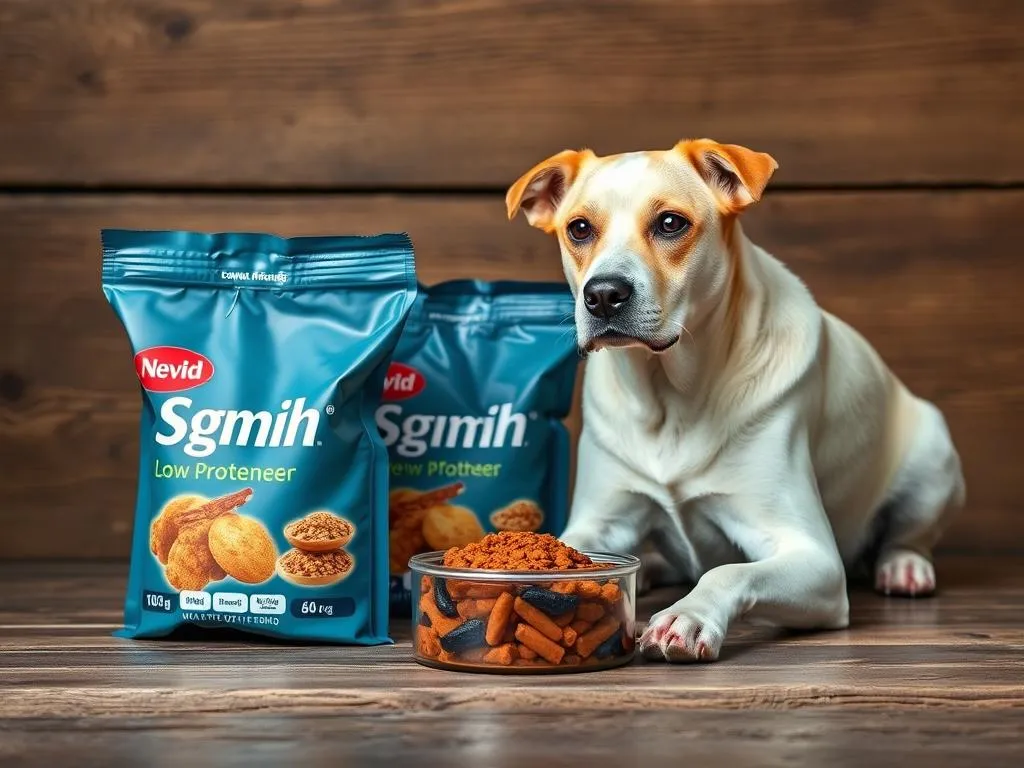
Introduction
Dog nutrition is crucial for the overall health and well-being of your furry companion. Each component of a dog’s diet plays a vital role in maintaining their physical and mental health. Among these components, protein is one of the most essential nutrients, serving as the building block for muscles, enzymes, and hormones. However, there are specific circumstances where a low protein diet is necessary or beneficial for dogs.
Certain health conditions, such as kidney disease, liver issues, or simply the natural aging process, may require a dog to consume less protein. This leads to the focus of our discussion: the best low protein dog foods available on the market today. Understanding when and why to choose these foods can significantly impact your dog’s quality of life.
Understanding Dog Nutrition
Nutritional Needs of Dogs
Dogs require a balanced diet that includes macronutrients: proteins, fats, and carbohydrates. Each plays a unique role in maintaining health:
- Proteins are crucial for muscle development and repair.
- Fats provide energy and support cell structure.
- Carbohydrates serve as a primary energy source.
In addition to these macronutrients, dogs also need vitamins and minerals to support various bodily functions. Water is another critical component, facilitating digestion, nutrient absorption, and temperature regulation.
Protein Requirements for Dogs
The recommended protein intake varies based on a dog’s age, size, and health status. Generally, adult dogs require about 18-25% protein in their diet, while puppies and lactating mothers may need up to 28% or more. However, high-protein diets can lead to health issues in certain dogs, especially those with compromised kidney function.
Signs of protein deficiency can manifest as weakness, poor coat condition, and lethargy. Therefore, understanding your dog’s specific needs is paramount.
When to Consider Low Protein Dog Foods
Health Conditions Requiring Low Protein Diets
Several health issues may necessitate a low protein diet:
- Kidney Disease and Renal Failure: High protein can exacerbate kidney problems, leading to increased waste for the kidneys to filter.
- Liver Diseases: A compromised liver may struggle to process high protein levels, making a low protein diet beneficial.
- Senior Dogs: As dogs age, their metabolism slows, and their protein needs may decrease.
- Obesity and Weight Management: Reducing protein can help manage weight without sacrificing other essential nutrients.
Signs Your Dog May Need a Low Protein Diet
If your dog shows any signs of kidney or liver issues, such as increased thirst, frequent urination, vomiting, or lethargy, it may be time to consider a low protein diet. Behavioral changes, such as decreased activity or altered appetite, can also signal dietary adjustments. Always consult your veterinarian for a proper diagnosis and recommendations.
Key Features of Low Protein Dog Foods
Ingredients to Look For
When selecting low protein dog foods, focus on high-quality protein sources. Animal-based proteins are typically more digestible than plant-based options. Additionally, ensure the food contains easily digestible carbohydrates, like brown rice or sweet potatoes, which can provide energy without excessive protein.
Nutritional Balance
Even in low protein diets, maintaining a balanced nutritional profile is essential. Adequate levels of fats and fibers should be included to support overall health and digestion. Essential vitamins and minerals, such as omega fatty acids and antioxidants, should also be present to promote well-being.
Top Picks for Best Low Protein Dog Foods
Review of the Best Low Protein Dog Foods
- Hill’s Prescription Diet k/d Kidney Care
- Overview: This veterinary-recommended food is specifically designed for dogs with kidney issues.
- Ingredients: Chicken, rice, barley, and various vitamins/minerals.
- Benefits: Supports kidney function and has controlled protein levels.
- Pros: Highly palatable; well-researched formula.
-
Cons: Prescription only; can be expensive.
-
Royal Canin Veterinary Diet Renal Support
- Overview: Another vet-recommended option, suitable for dogs with chronic kidney disease.
- Ingredients: Pork by-products, corn, and fish oil.
- Benefits: Tailored to support kidney health with low protein content.
- Pros: Available in multiple flavors; good palatability.
-
Cons: Requires veterinary supervision; premium pricing.
-
Purina Pro Plan Veterinary Diets NF Kidney Function
- Overview: A balanced diet focused on kidney health.
- Ingredients: Salmon, rice, and other vital nutrients.
- Benefits: Focused on kidney function while maintaining taste.
- Pros: Good digestibility; affordable.
-
Cons: May not suit all dogs’ taste preferences.
-
Merrick Grain-Free Texas Beef & Sweet Potato Recipe
- Overview: A grain-free option with lower protein levels.
- Ingredients: Beef, sweet potatoes, and peas.
- Benefits: Offers a balanced meal with lower protein while maintaining flavor.
- Pros: Grain-free; high-quality ingredients.
-
Cons: Not specifically formulated for health conditions.
-
Blue Buffalo Homestyle Recipe
- Overview: A low-protein wet food option.
- Ingredients: Chicken, potatoes, carrots, and peas.
- Benefits: Provides hydration and a balanced meal.
- Pros: Natural ingredients; no artificial preservatives.
- Cons: Lower protein may not suit all dogs.
Comparison Table
| Brand | Protein Content | Price Range | Customer Ratings |
|---|---|---|---|
| Hill’s Prescription Diet k/d | Low | $$$ | ★★★★☆ |
| Royal Canin Vet Diet Renal Support | Low | $$$$ | ★★★★☆ |
| Purina Pro Plan NF Kidney Function | Low | $$ | ★★★★☆ |
| Merrick Grain-Free Texas Beef | Moderate | $$ | ★★★★ |
| Blue Buffalo Homestyle Recipe | Low | $$ | ★★★★☆ |
Homemade Low Protein Dog Food Recipes
Benefits of Homemade Dog Food
Making homemade dog food allows you to control the ingredients and nutritional content, ensuring your dog receives the best possible diet tailored to their needs. While it may require more effort, it can also lead to cost savings in the long run.
Sample Recipes
Low Protein Chicken and Rice
- Ingredients:
- 1 cup cooked chicken (shredded)
- 1 cup cooked rice
- 1/2 cup carrots (cooked and chopped)
-
1/2 cup peas (cooked)
-
Instructions:
- In a mixing bowl, combine all ingredients.
- Serve at room temperature.
Vegetable and Quinoa Medley
- Ingredients:
- 1 cup cooked quinoa
- 1/2 cup green beans (cooked and chopped)
- 1/2 cup sweet potatoes (cooked and mashed)
-
1/2 cup carrots (cooked and chopped)
-
Instructions:
- Mix all ingredients in a bowl.
- Allow to cool before serving.
Beef and Sweet Potato Stew
- Ingredients:
- 1 cup ground beef (cooked)
- 1 cup sweet potatoes (cubed and cooked)
- 1/2 cup peas (cooked)
-
2 cups low-sodium beef broth
-
Instructions:
- In a pot, combine all ingredients and simmer for 10-15 minutes.
- Let cool before serving.
Transitioning to Low Protein Dog Food
Steps to Transition
Transitioning your dog to a low protein diet should be a gradual process to avoid digestive upset. Start by mixing a small amount of the new food with the existing food, gradually increasing the new food’s proportion over 7-10 days.
Monitoring Your Dog’s Response
During the transition, monitor your dog’s behavior and health closely. Signs of success include improved energy levels and health indicators. If you notice any adverse reactions, consult your veterinarian for guidance.
Frequently Asked Questions (FAQs)
Common Concerns about Low Protein Diets
Is a low protein diet safe for all dogs?
Not all dogs require a low protein diet. It’s essential to consult a veterinarian before making dietary changes.
How do I know if my dog needs a low protein diet?
Signs of health issues, such as kidney or liver problems, can indicate the need for a low protein diet. A vet’s assessment is crucial.
Can I mix low protein food with regular food?
Mixing foods is not generally recommended without veterinary advice, as it can complicate dietary balance.
Best Practices for Dog Nutrition
Maintaining a balanced diet for your dog is essential. Regular vet check-ups will help you keep track of your dog’s health and nutritional needs.
Conclusion
The correct balance of protein in a dog’s diet is vital for their health and longevity. Understanding the necessity of low protein dog foods can help manage specific health challenges and improve your dog’s quality of life. Always consult with a veterinarian to determine the best dietary approach for your furry friend. With the right information and care, you can ensure your dog remains healthy and happy for years to come.









